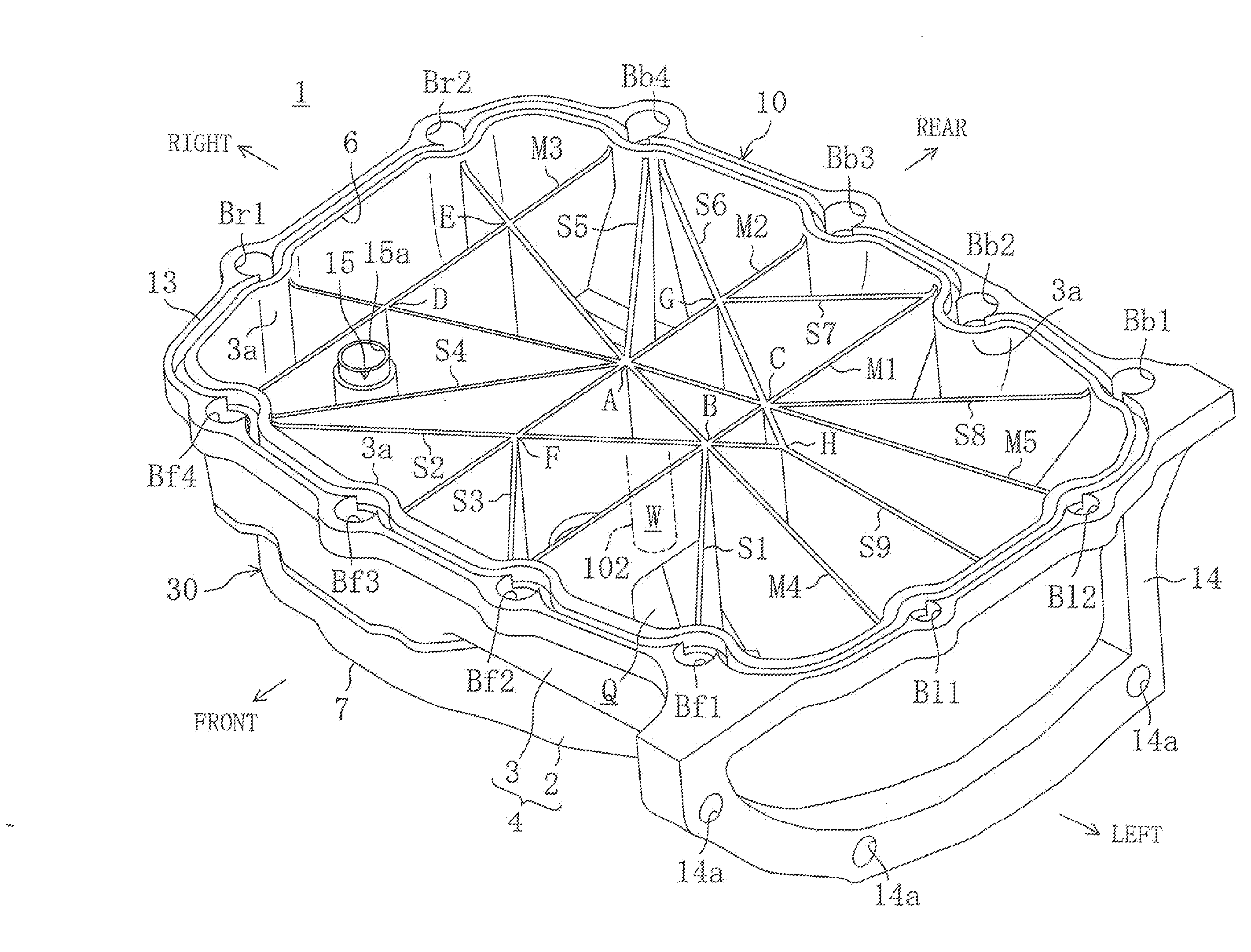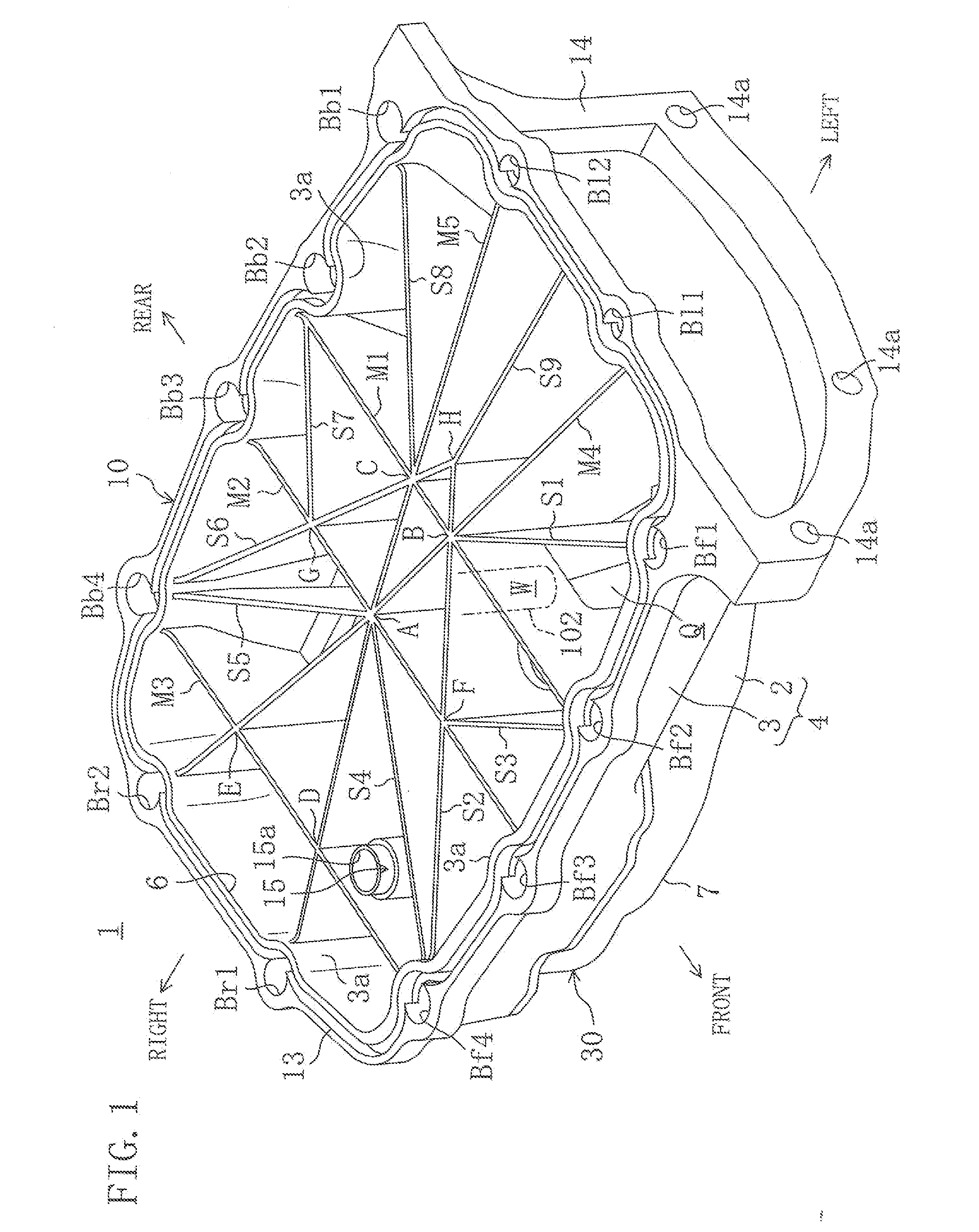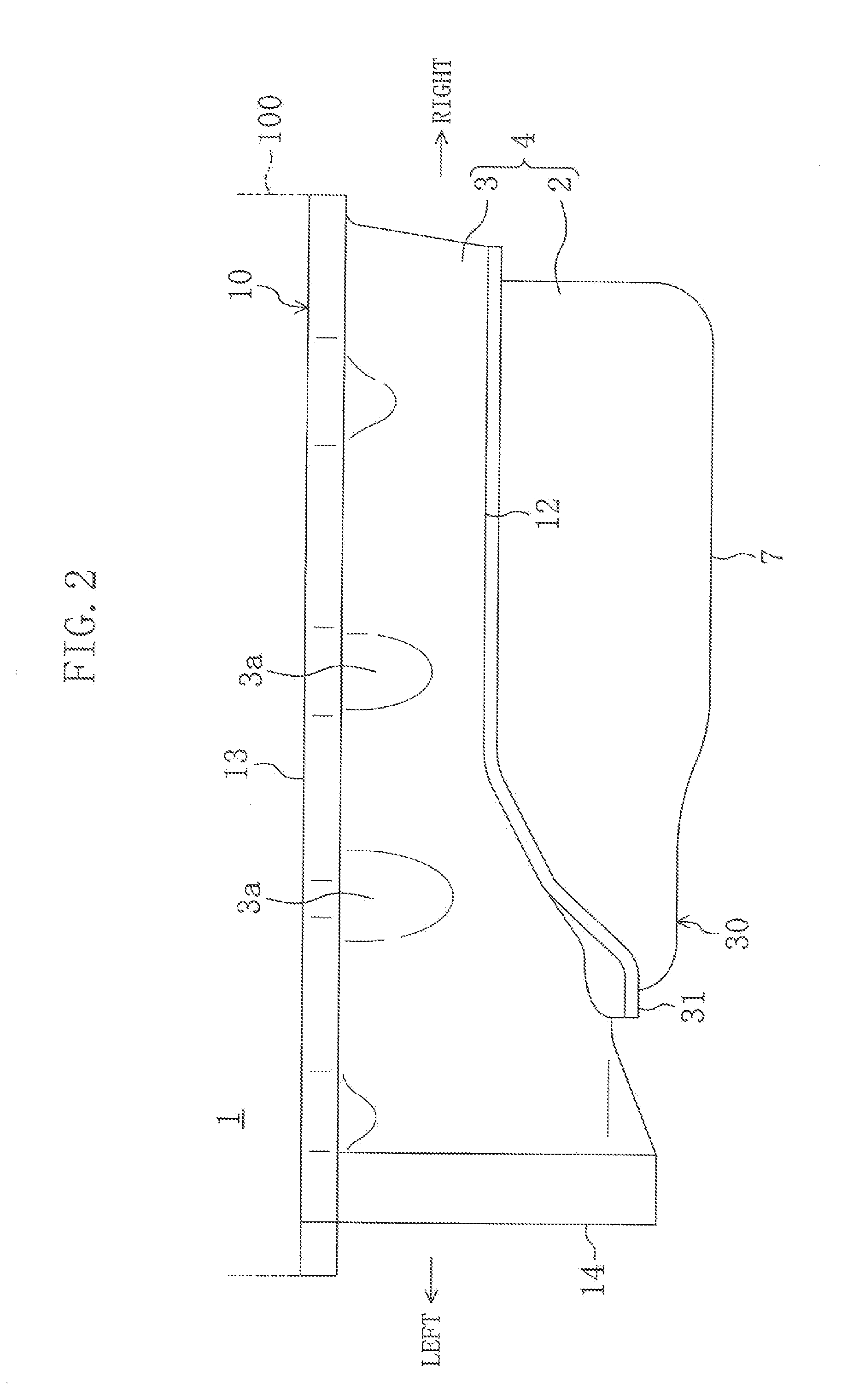Oil pan
a technology of oil pans and oil cylinders, applied in the direction of lubricant mounting/connection, combustion air/fuel air treatment, machines/engines, etc., can solve the problems of insufficient rigidity, noise, and considerable reduction of rigidity of reservoirs, so as to reduce energy consumption, reduce viscosity, and enhance heat insulation properties
- Summary
- Abstract
- Description
- Claims
- Application Information
AI Technical Summary
Benefits of technology
Problems solved by technology
Method used
Image
Examples
embodiment 1
[0074]FIG. 1 illustrates an oil pan 1 according to a first embodiment of the present invention. The oil pan 1 is intended to be used in an engine (not shown) mounted on an engine compartment at the front of an automobile, and is attached to the lower surface of a cylinder block 100 of the engine, as illustrated in FIGS. 2 and 3. The engine mounted in the engine compartment is positioned such that the crank shaft extends in the lateral direction of the automobile.
[0075]In the embodiments, the front side of the automobile is referred as the “front,” the rear side of the automobile is referred to as the “rear,” the left side of the automobile is referred as the “left,” and the right side of the automobile is referred as the “right,” for simplicity.
[0076]The oil pan 1 includes: a recessed oil reservoir 4 formed by a bottom wall 2 covering substantially the entire bottom surface of the cylinder block 100 and a peripheral wall 3 rising from the periphery of the bottom wall 2; first throug...
embodiment 2
[0157]FIGS. 22-24 illustrate a second embodiment of the present invention. An oil pan 1 according to the second embodiment is different from that of the first embodiment only in that the oil strainer 5 is separated from the oil reservoir 4, and in the structures of the ribs M1 through M4. Thus, in the following description, the same reference numerals denote the same components in the first embodiment, and only different aspects will be described in detail.
[0158]Specifically, as illustrated in FIGS. 22 and 23, the oil pan 1 of the second embodiment includes first through fourth main ribs M1 through M4. The first and second main ribs M1 and M2 are spaced apart from each other, and extend substantially in parallel with each other in the front-to-rear direction. The third and fourth main ribs M3 and M4 are spaced apart from each other, and extend substantially in parallel with each other in the right-to-left direction. Intermediate portions of the first and second main ribs M1 and M2 i...
PUM
 Login to View More
Login to View More Abstract
Description
Claims
Application Information
 Login to View More
Login to View More - R&D
- Intellectual Property
- Life Sciences
- Materials
- Tech Scout
- Unparalleled Data Quality
- Higher Quality Content
- 60% Fewer Hallucinations
Browse by: Latest US Patents, China's latest patents, Technical Efficacy Thesaurus, Application Domain, Technology Topic, Popular Technical Reports.
© 2025 PatSnap. All rights reserved.Legal|Privacy policy|Modern Slavery Act Transparency Statement|Sitemap|About US| Contact US: help@patsnap.com



